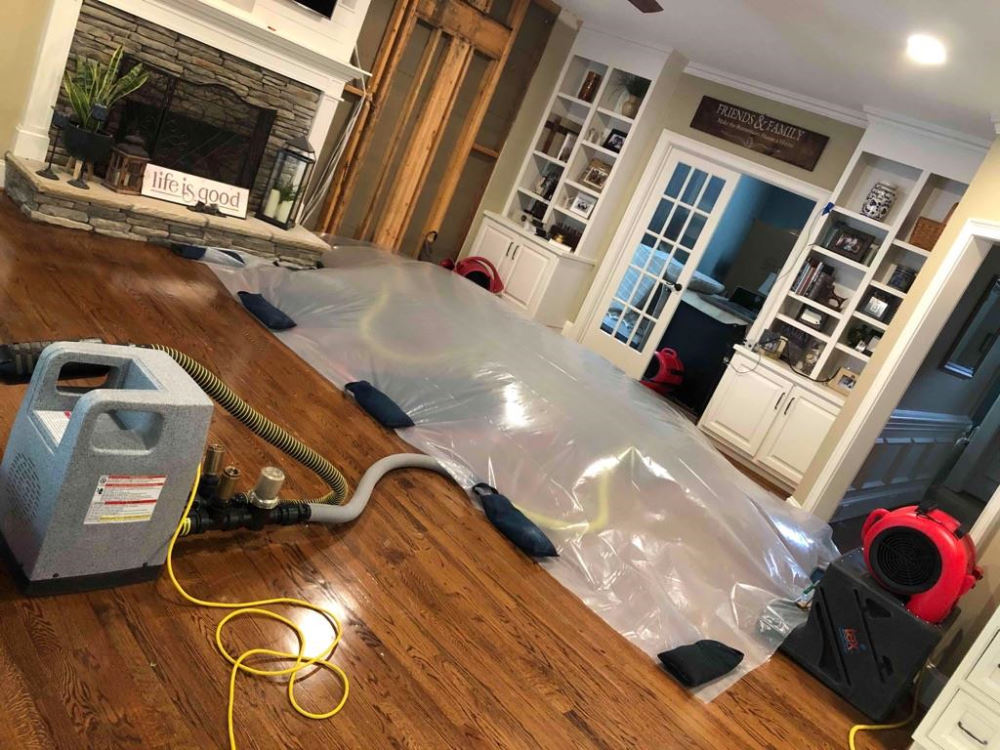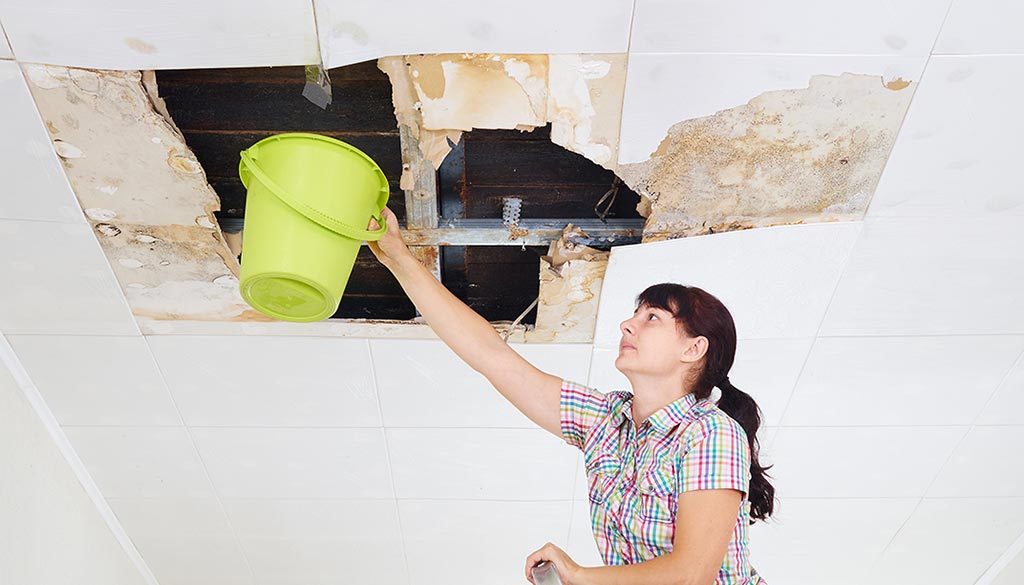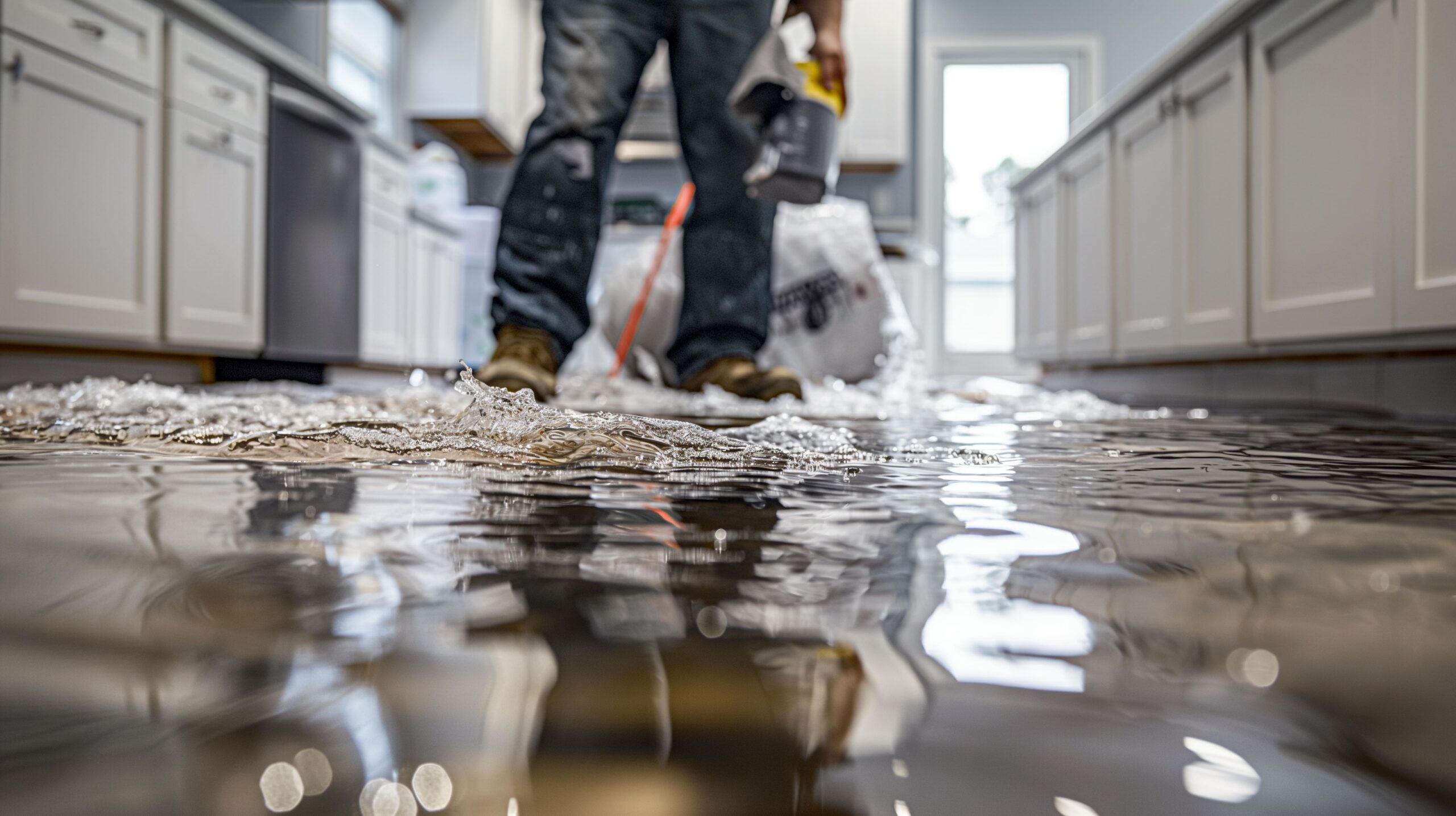Water Damage Cleanup Checklist: What to Do in the First 24 Hours
Important Steps to Comply With for Efficient Water Damage Reconstruction in your house
When encountered with water damage in your home, knowing the vital actions for reliable repair can make all the distinction. You need to analyze the damages and assurance safety prior to tackling the issue. Quiting the source of water is vital, however it's simply the start. There's a collection of actions you should take to safeguard your property from further concerns when you have actually managed that. Allow's explore what you ought to do following.
Assess the Damage
The first step is to analyze the damage completely when you uncover water damages in your home. Begin by identifying the resource of the water intrusion. Look for leakages, burst pipes, or various other concerns causing the issue. Next off, take a look at the affected areas for noticeable indicators of damages, including warping, discoloration, or mold growth. Don't fail to remember to search in covert areas like behind walls or under floor covering, as water can permeate right into these locations unnoticed.Document the damage by taking clear photos and notes. When going over the scenario with your insurance policy company or reconstruction specialists, this will certainly assist you. Take note of the kind of products impacted, as different materials need different remediation methods. Lastly, assess the extent of the damage. Is it considerable or minor? Comprehending the scope will direct you in making a decision whether to handle it on your own or employ the professionals for a more extensive restoration procedure.

Make sure Security
Prior to you start any type of reconstruction work, assuring your safety and security is necessary. Initially, evaluate the problem of your home. If the water's deep or if you see electric risks, don't go into the location. Turn off the electrical energy and gas supply to avoid crashes. Put on safety equipment like masks, handwear covers, and boots to protect yourself from impurities or mold.It's essential to remain familiar with your surroundings; expect sharp objects and unsafe surface areas. Treat it as harmful waste if the water is from a sewer backup. Maintain youngsters and pet dogs away from influenced locations to avoid exposure.Once you've taken these safety measures, you can continue with the remediation procedure. Bear in mind, your security comes first, and if you're ever unclear, it's finest to get in touch with an expert. Taking these steps will certainly assist assure you prepare to tackle the restoration securely and efficiently.
Stop the Resource of Water
After ensuring your security, the next step is to quit the source of water. Identify where the leakage is coming from. Maybe a ruptured pipe, a defective home appliance, and even hefty rain entering with a damaged roofing system. If it's a pipes problem, shut off the primary water to your home to avoid additional flooding. For devices, unplug them and turn off their water system valves.If the resource is outside, like rain, try to divert it away from your home making use of sandbags or other obstacles. For small leaks, you may be able to utilize tape or a sealant briefly till a professional can repair it. Bear in mind, dealing with the source quickly is important to reducing damages and preventing mold growth. As soon as you've stopped the water, you'll remain in a far better placement to relocate on to the following steps in the reconstruction process.

Eliminate Excess Water
Act promptly to get rid of excess water, as standing water can cause much more substantial damages and mold and mildew development. First, collect your devices: a wet/dry vacuum, pails, and towels. You can utilize towels to saturate up the wetness if the water is superficial. For much deeper water, a wet/dry vacuum cleaner is your finest bet. Ensure to empty the vacuum cleaner often to prevent overflow.If the water is polluted, like from a sewer backup, use safety gear, including masks and gloves, to keep yourself risk-free. As soon as you've gotten rid of as much water as feasible, look for hidden pockets of wetness in edges and under furnishings, as these can harbor mold.Don' t fail to remember to switch off electrical devices and power electrical outlets in damp locations to prevent dangers. This initial step is essential in lessening damage and establishing the stage for an effective restoration procedure.
Dry and Dehumidify the Location
Once you've eliminated the excess water, it's important to dry and evaporate the location extensively. Beginning by utilizing dehumidifiers efficiently to draw wetness out of the air and avoid mold growth. Watch on humidity levels to guarantee the space dries totally.
Remove Standing Water
To successfully take on water damage, you require to concentrate on removing standing water as quickly as possible. Start by gathering needed devices, like a wet/dry vacuum cleaner or a pump, relying on the quantity of water. A vacuum cleaner should do the technique if the water is superficial. For bigger quantities, a pump is extra reliable. While working, make certain to use protective gear to maintain yourself risk-free from impurities. As you get rid of the water, pay attention to hidden areas like under furniture or in edges where water may accumulate. Your room will certainly start to dry out when you have actually gotten rid of the bulk. This step is important, as lingering water can lead to mold and mildew development and more extensive damages.
Use Dehumidifiers Efficiently
How can you effectively utilize dehumidifiers to completely dry and dehumidify your room? Start by placing your dehumidifier in one of the most affected location, ideally where water damages is most serious. Make sure to shut all doors and home windows to create a covered atmosphere. Turn on the dehumidifier and set it to the proper moisture level, usually around 30-50%. Vacant the water collection container frequently, or consider making use of a design with a continuous drain option for ease. If possible, make use of fans to boost airflow, aiding the dehumidifier work extra efficiently. Maintain the dehumidifier running until you're positive that the location is thoroughly dried, stopping mold development and additional damages (Flood Damage Restoration). This action is necessary for efficient water damages restoration
Display Moisture Levels
Tracking humidity levels is essential during the drying out procedure, as it aids ensure your room remains complimentary from excess dampness. Buy a reputable hygrometer to track moisture properly. Preferably, you intend to preserve degrees in between 30% and 50%. If moisture readings increase above this array, you might need to adjust your dehumidifiers or fans to boost air flow. Inspect the analyses consistently, especially in areas prone to dampness, like basements or washrooms. If you notice relentless high humidity, think about enhancing air flow or making use of added dehumidifiers. Remaining on top of these levels not only quickens the drying out procedure yet likewise protects against mold and mildew development, ensuring your home keeps comfy and risk-free.
Tidy and Disinfect Affected Surfaces

Recover and Fix Your Home
After cleaning and disinfecting the affected locations, it's time to recover and fix your home. Begin by assessing the damage. Examine for structural issues, like damaged wall surfaces or floors, and resolve any necessary repairs. Changing damaged drywall or floor covering is important for both looks and safety.If your furniture or belongings were impacted, consider whether they can be recovered or require replacement. Tidy or professionally bring back things where possible.Next, repaint wall surfaces and touch up any type of locations that need focus. This not only enhances look however also shields surfaces from future water damage.Don' t fail to remember to check your plumbing and home appliances for leaks, making sure every little thing's operating appropriately. Take into consideration installing a dehumidifier to avoid future wetness problems. By taking these actions, you'll restore your home to its former splendor and create a much safer living setting.
Regularly Asked Questions
How Lengthy Does Water Damage Remediation Usually Take?
Water damages remediation typically takes anywhere from a few days to several weeks, depending upon the extent of the damage (Water Damage Restoration St George UT). You'll wish to analyze the scenario promptly to minimize more issues and guarantee correct repair
Will My Insurance Cover Water Damages Remediation Costs?
Your insurance policy could cover water damage repair costs, yet it depends upon your policy. Inspect your insurance coverage details and call your insurance policy representative to clarify what's consisted of and what you need to sue.
Can I Deal With Water Damage Restoration Myself?
You can manage water damages repair on your own, however it's important to evaluate the situation first. If it's extensive, you could intend to call experts. Always focus on safety and security and guarantee you've got the right tools.
What Are the Indications of Hidden Water Damages?
You could observe indications of covert water damage like deformed wall surfaces, mildewy odors, or discoloration. If your floorings feel mushy or you area mold, it's time to investigate additionally before the situation worsens.
Exactly How Can I Stop Future Water Damages in My Home?
To prevent future water damage in your home, you ought to consistently check pipes, seal splits, keep seamless gutters, and guarantee appropriate water drainage. Installing a sump pump and wetness obstacles can also help keep your area dry. When you find water damages in your home, the first step is to examine the damages thoroughly. Act quickly to remove excess water, as standing water can lead to a lot more extensive damages and mold and mildew development. To properly deal with water damage, you need to focus on removing standing water as promptly as feasible. As you get rid of the water, pay interest to concealed areas like under furniture or in corners where water might accumulate. Water damages restoration typically takes anywhere from a couple of days to several weeks, depending on the extent of the damages.